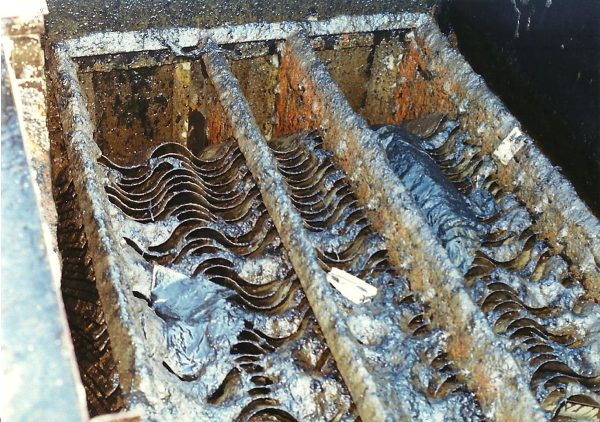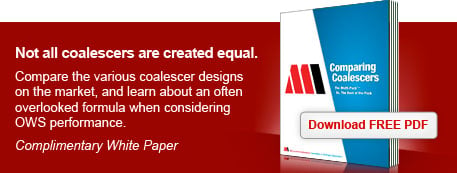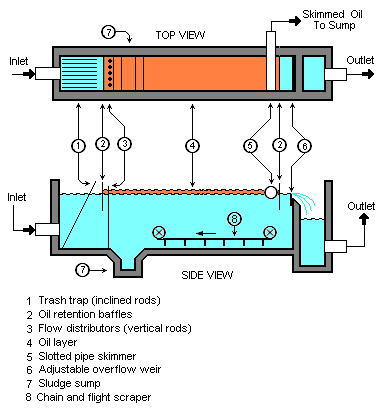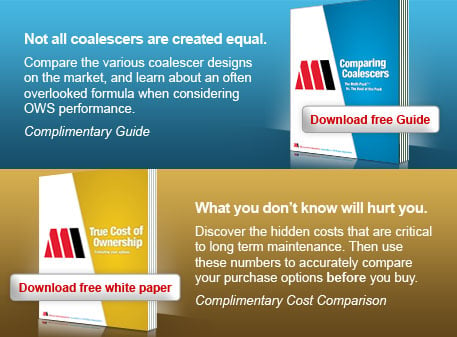Why Oil/Water Separator Manufactures Went The Way Of Plastic Corrugated Coalescing Media Decades Ago
Once those treating oily wastewater realized they no longer needed to take on the large treatment footprint of installing API oil/water separation pits or tanks, they were greeted by several new companies entering the oil/water separation marketplace. They also were faced with the difficulty of weighing one manufacturer's removal promises against another.
In response to this, the American Petroleum Institute (API) released a new set of sizing criteria in Feb of 1990 that dealt with the emergence of "plate pack style" or "Coalescing" oil water separators. This document, API Publication 421, went about laying out several calculations that would assist end users in determining how much surface area was needed to achieve an acceptable removal rate at a given flow.
At that time, the growing fad within the Oil/Water separator industry was to make the coalescing plates corrugated to give the bundles more structural integrity (much in the way a corrugated cardboard box is able to maintain its shape). Originally this allowed a once flat 1/4" piece of steel to go to an 1/8" thickness or less and save on material costs. The manufacturing process went through an even more drastic cost reduction when these sinusoidal shaped plates began to be fabricated out of different types of plastic. The reason for the corrugation was basically cost reductions, as manufactures all went to battle against each other claiming higher removal rates at bargain pricing.





The standard practice became to position these progressively slanted/tilted S shaped plates in an upflow or downflow position, so gravity could help in one of the two important aspects of the treatment process--downflow for solids and upflow for oil. The problem with the sinusoidal design, or the CPI (corrugated plate interceptor), was that solids would all concentrate in the trough areas where they would quickly accumulate. The trade off for producing the required surface areas to keep up with higher removal mandates was a design that fouled very quickly.
-2_copy-resized-600.jpg)
The unequal distribution of solids loading combined with oils or solids having to work against a given flow, gave way to a new set of problems that would become commonplace in oil/water separation. The frustration with the new coalescing variety of oil/water separators back then, is still a problem today. Oil/water separators that present themselves as low cost options have serious design flaws that foul prematurely and compromise efficiency.
See Why Mercer Uses A Cross Flow Designed Oil/Water Separator With A Flat Plate
In January of this year lead process designer Dave Goding had the opportunity to review several of the mainstream coalescing technologies during a keynote at Globalspec's water quality and reclamation virtual conference. Below is an excerpt from his portion that covered CPI oil/water separators.





